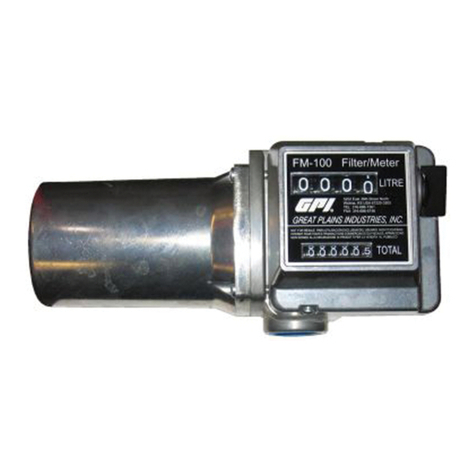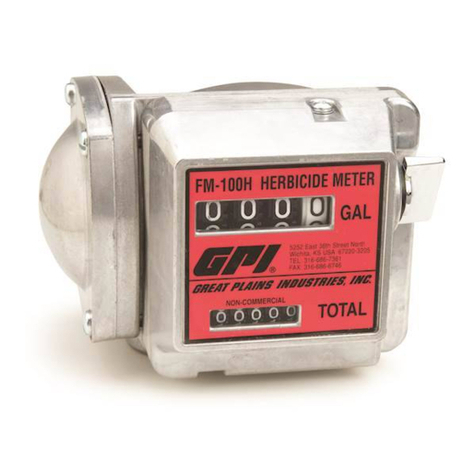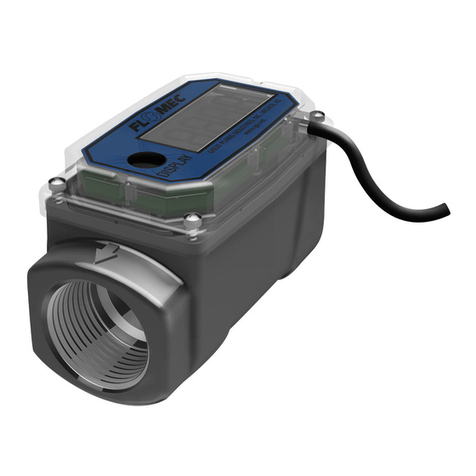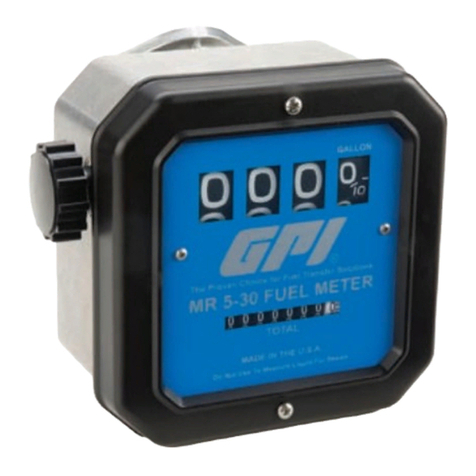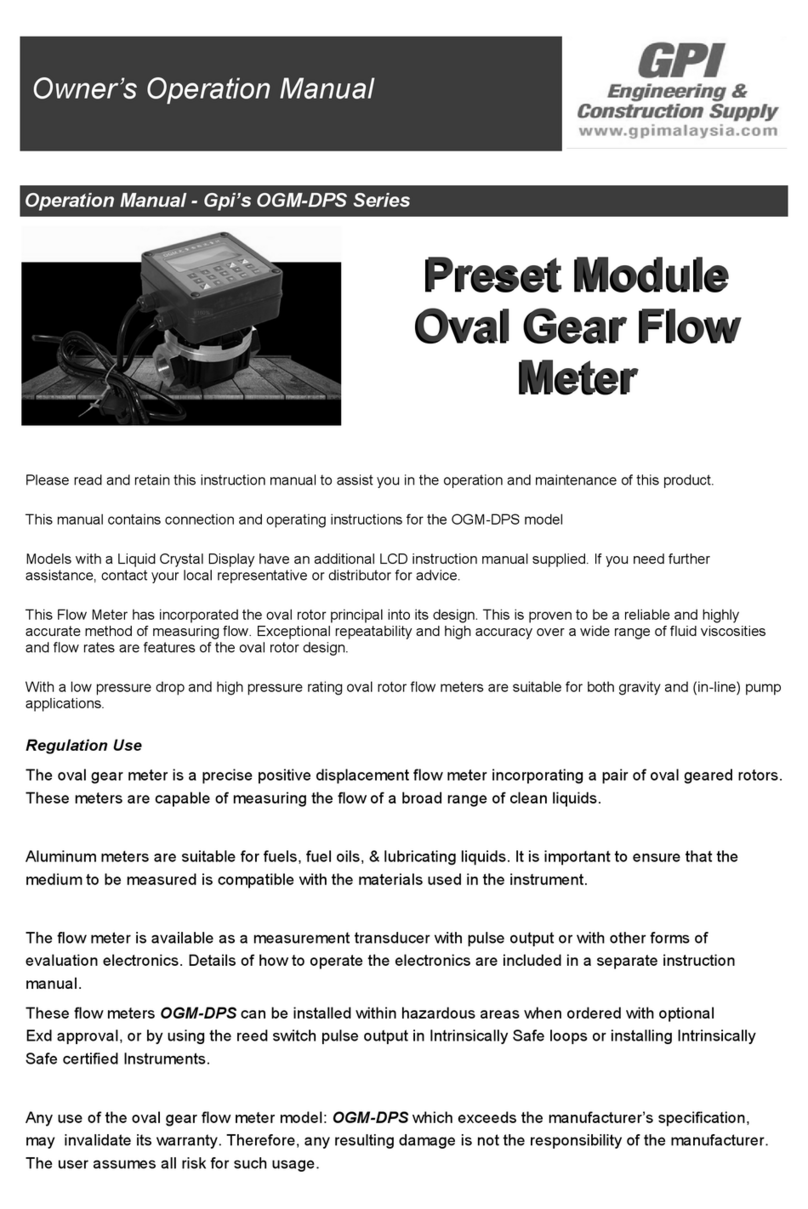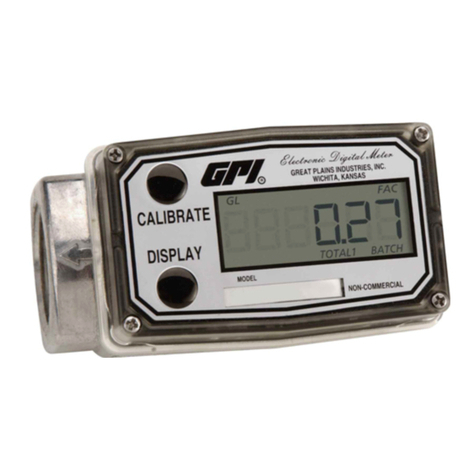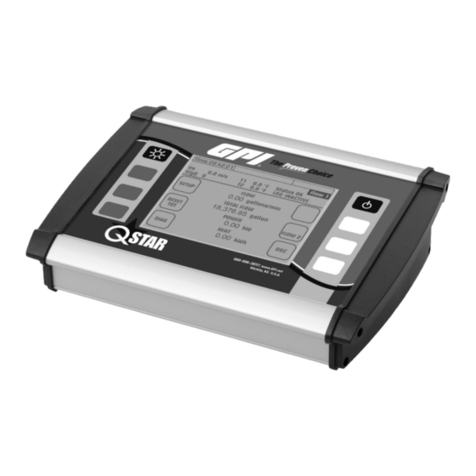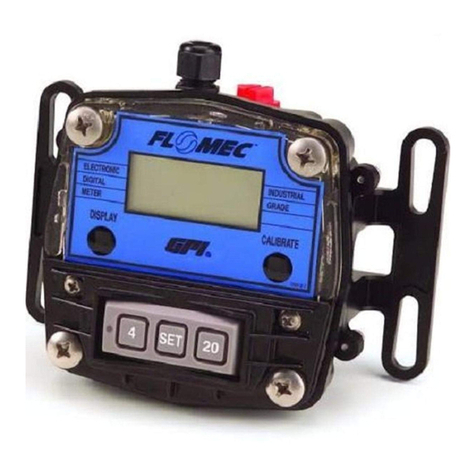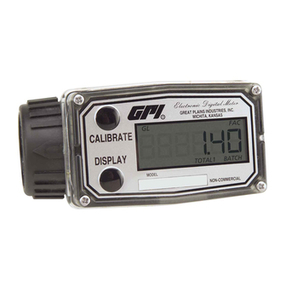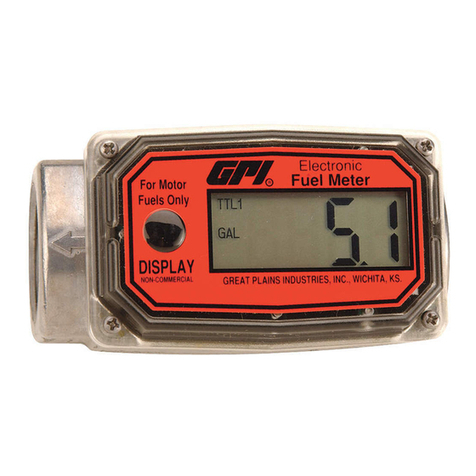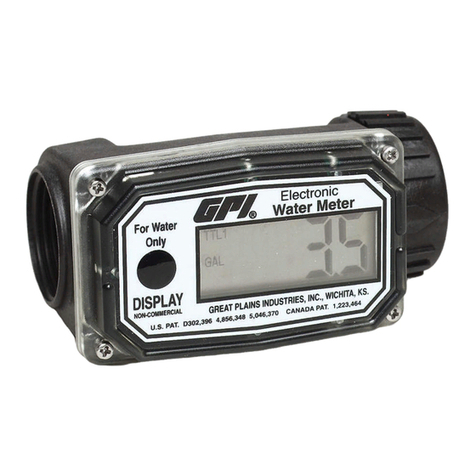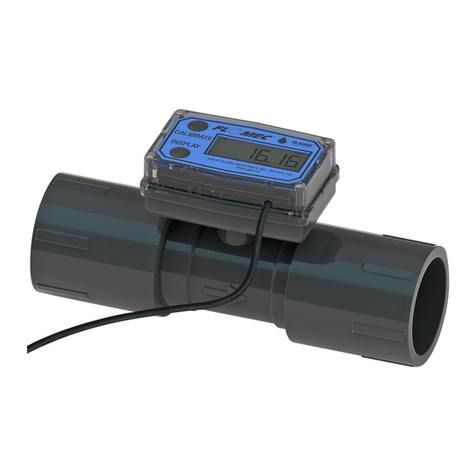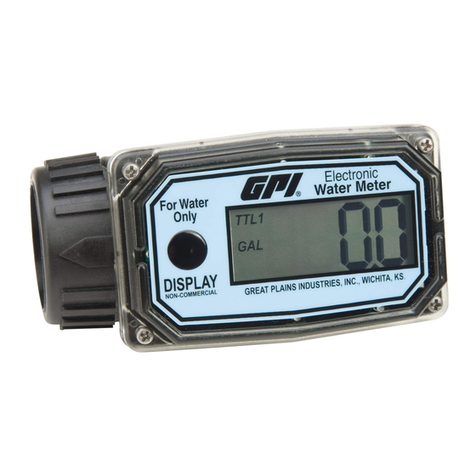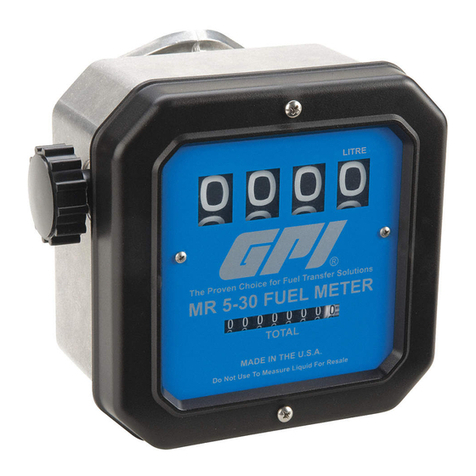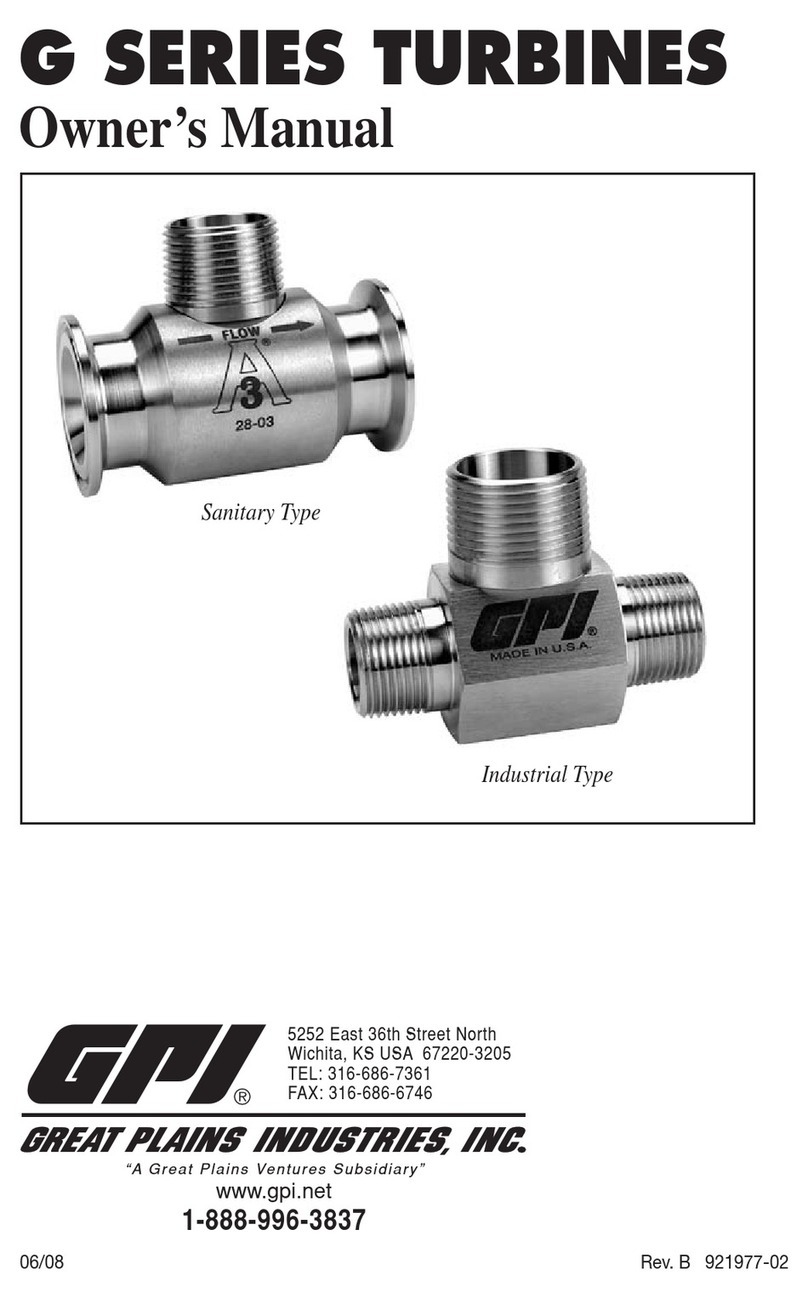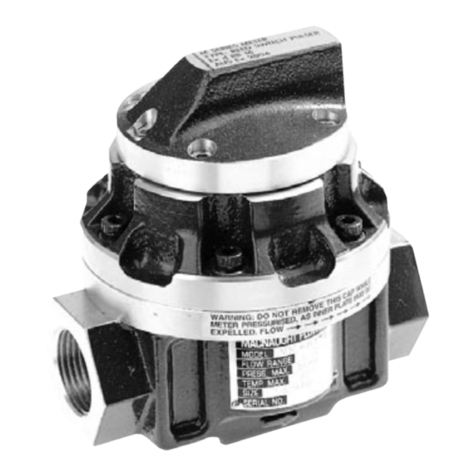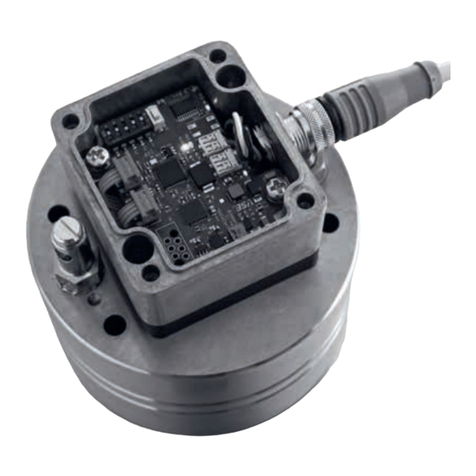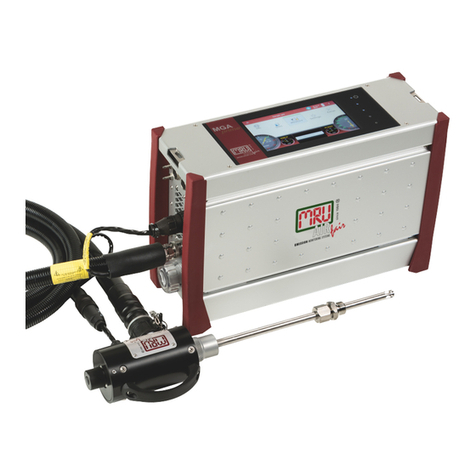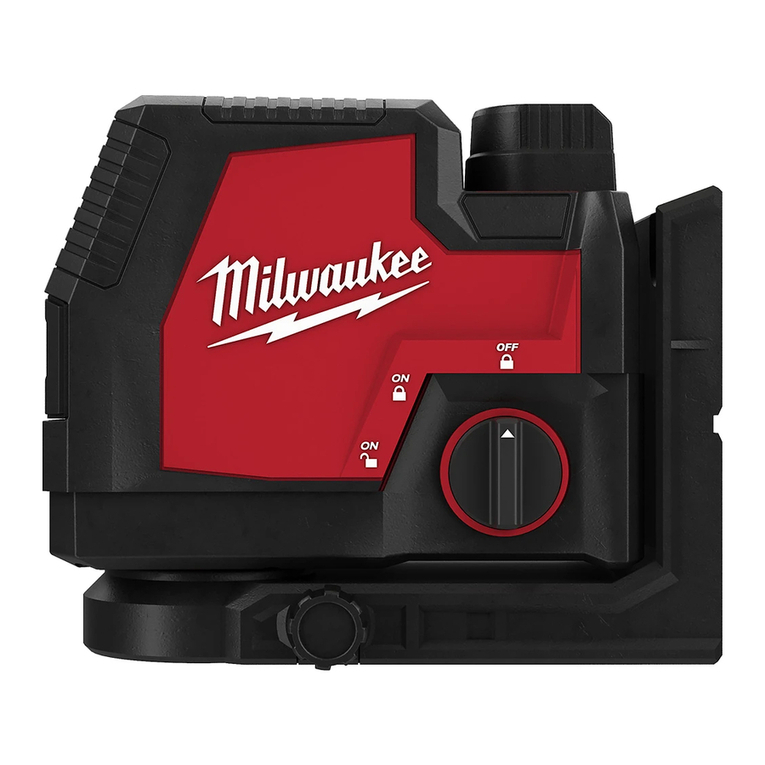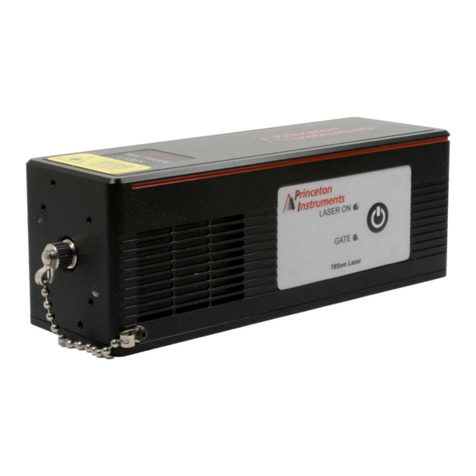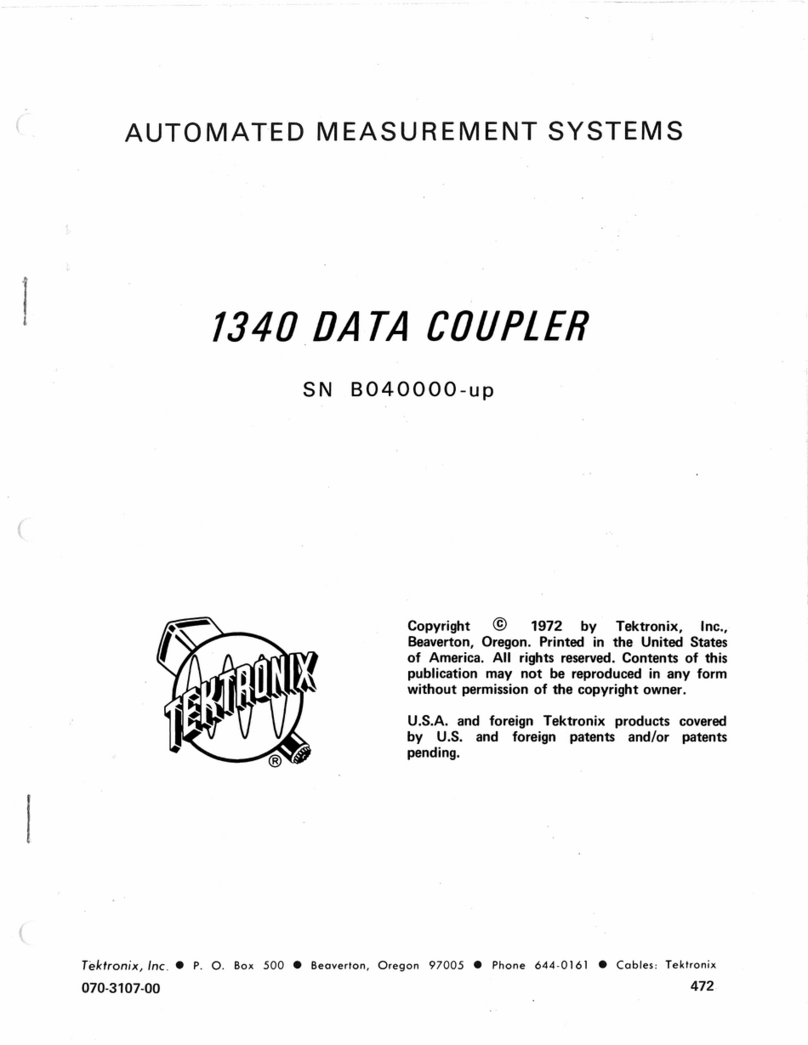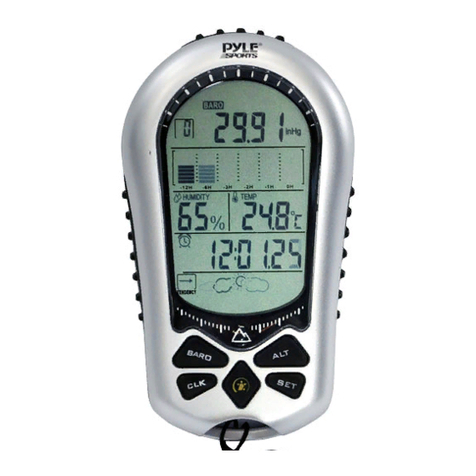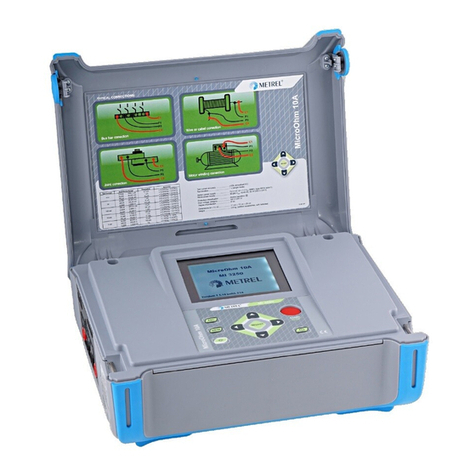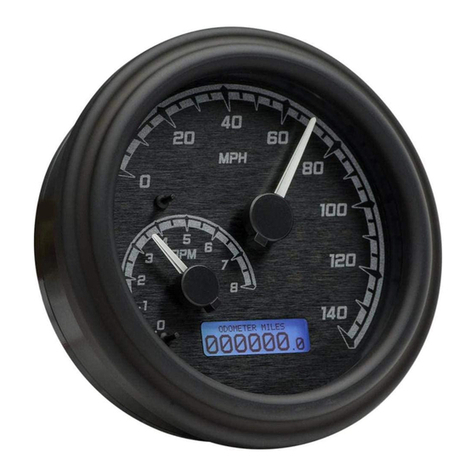GPI GBM 110 User manual


TABLE OF CONTENTS
SPECIFICATIONS ......................................................................................1
MOUNTING ................................................................................................3
WIRING .....................................................................................................4
THEORY OF OPERATION .........................................................................6
MILIVOLT INPUT OPTION JUMPER SELECTIONS..................................7
FRONT PANEL OPERATIONS................................................................... 8
PROGRAMMING FLOW CHART ...............................................................8
DEFINITIONS OF MENU PROMPTS.........................................................9
CALCULATING SCALE FACTORS ............................................................11
PROGRAMMING........................................................................................12
TROUBLESHOOTING GUIDE ...................................................................17
WARRANTY
DECODING PART NUMBER

2
3.622
(92)
1.772
(45)
4.437
(112.7)
2.625
(66.68)
0.587
(14.91)
4.245
(107.8)
BEZEL
GASKET
CUSTOMER PANEL
Panel Thickness 0.062" (1.5)
to 0.187" (4.7) max.
3.925
(99.7)
SPECIFICATIONS
(continued)
Application
Panel
Cutout
Dimensions:
Flowmeter Solenoid Valve
STOP
RST
ENTER LOCK PRE APROG VIEW START
ABCDE

3
3.622
(92)
1.772
(45)
4.437
(112.7)
2.625
(66.68)
0.587
(14.91)
4.245
(107.8)
BEZEL
GASKET
CUSTOMER PANEL
Panel Thickness 0.062" (1.5)
to 0.187" (4.7) max.
3.925
(99.7)
MOUNTING
The unit is designed to be mounted with a gasket providing a water tight seal. Two mounting brackets are provided to secure
the unit to the panel. A panel less than .1" may distort if the clamps are screwed too tightly.
Slide the body of the unit through the rubber gasket. Insert the unit into the panel. As shown in "FIG. A", slide the brackets
up the groove to press against the back of the panel. Insert screws into rear of brackets and tighten them evenly and alter-
nately. Do not over tighten! A normal level of torque is required. Maximum torque should be 3" pounds.
This product is designed to be panel mounted and is NEMA 4 rated if proper mounting procedures are followed and the
required and supplied hardware is correctly used.
If the panel in which the unit is mounted is less than .125 of an inch thick, the possibility exists that there will be some flex-
ing. Should this flexing occur, the resulting deformation of the panel could cause a loss of the water tight seal. In case this
should occur, the use of silicone or other sealant would be recommended.
This product is designed to the NEMA 4 standard. However, the fact that we are unable to control either the location in which
the device is installed or the actual installation itself requires that the company's liability shall extend only to the repair or
replacement of a defective product.
We are prepared to offer additional assistance in those special situations where normal mounting methods do not seem
to satisfy the customers needs. This assistance may be obtained by calling the factory and asking for Industrial Customer
Service.
FIG. A
DIMENSIONS
FIG. A
Panel
Cutout

4
WIRING
The rear terminal contains 12 screw terminals for connecting #14 to #28 gauge wire.
The unit is controlled by a microprocessor and, therefore, an electrically "noisy" environment could cause operating problems.
The input power line should not be common to power lines for motors, pumps, contactors, etc.
The unit is designed to be immune from line or RF voltage interference. In some environments voltage spikes of over 100
volts, even 1000 volts, can occur. When common to a power line driving motors voltage fluctuations can be extreme and
rapid. Lines driving DC or AC solenoids, relays, or actuators can also cause problems.
Four sources of noise can occur:
1) AC power line noise - If the unit cannot be connected to a clean power source, an inductive load suppressing device
(MOV as GE # V130LA1 or Resistor Capacitor as Paktron # .2 uf/220 ohm @ 400V) can be installed. Although
locating the suppressor across the AC supply at the unit should help, best results are obtained by connecting the
suppressor across the leads of the "load" at the device causing the spike.
2) Input line noise -The noise is carried on the input and D.C. ground lines. Make sure the input wires are never run into
the unit in a bundle with power input lines. Also, keep these input lines isolated from inductive lines from devices
drawing heavy loads. If there is a possibility of electrical noise, we recommend using shielded cable, with the shield
being hooked to the D.C. ground terminal on the instrument, and to "earth" at one point in the circuit, preferably at the
D.C. ground terminal of the unit.
3) Output lines - The unit has two relay outputs. When these outputs are used to run external relays or solenoids, spikes
can be generated upon activation. This noise can spread through the instrument causing operating problems. If the
source is a D.C. operated device, a general purpose diode (IN4004) placed across the solenoid prevents electrical
noise spikes. Connect the cathode (banded side) to the more positive side of the coil. If the source is an A.C.
operated device, use a MOV or Resistor Capacitor across the coil.
4) 12 VDC output supply - Noise can be generated on the 12 VDC output supply if it is used to drive inductive loads or if
the current draw exceeds 50 mA. Insure that all inductive loads have a diode (such as IN4004) across the coil and
that the current does not exceed 50 mA.
Supply Line Suppression
ELECTRONIC
INSTRUMENT
MOV
CAP
AC
SUPPLY
OPT.
RFI
LINE
FILTER
SUPPRESSION
AT AC INPUT
Relay Contact Suppression
DC
SUPPLY
ELECTRONIC
INSTRUMENT
RELAY
CONTACT
+
-
DIODE
LOAD
DC Load
ELECTRONIC
INSTRUMENT
RELAY
CONTACT
MOV
LOAD
CAP
AC
SUPPLY
AC Load

5
WIRING
(continued)
AC / DC Power Connections
NOTE: Connect power only after other connections are finished. Do not touch the live AC power terminals! The unit has been de-
signed with an isolated AC input. Thus, polarity is not a concern for the AC input. Connect AC power to pins 11 and 12. The chassis is
plastic, therefore earth ground is not used. For D.C. operation, connect + 12V to pin 7 and - D.C. to pin 8.
Sensor Connections
These diagrams show how to hook typical input sensors to the unit. The unit supplies an unregulated 12 Volt (50mA) output to power
these sensors (Pin 7).
A valid pulse is one which makes a transition from the off-state (0 to 1V) to the on-state (4 to 30V): a positive going edge. The input
impedance is 10K Ohms to ground. The unit can be programmed from the front panel for slow switch closure inputs up to 40Hz (select
"Lo CPS"), or solid state switches (select "hi CPS") up to 9.99KHz. No rear terminal jumpers are required. Use PNP (sourcing) type
pulsers.
Wiring Terminations:
Magnetic Pickup (30 mV) Pulse InputHigh Impedance (4-30VDC) Pulse Input with Analog Output
Typical Flowmeter Connections
1- COMMON
2- N.O.(N.C./NPN)
3- COMMON
4- N.O.(N.C./NPN)
5- COUNT
6- START
7- 12VDC OUT/+DC IN
8- -DC (GROUND)
9- STOP/RESET
10- NOT USED
11- A.C. INPUT
12- A.C. INPUT
RELAYS
A
B
REAR VIEW
1 2 3 4 5 6 7 8 9 10 11 12
1- COMMON
2- N.O.(N.C./NPN)
3- COMMON
4- N.O.(N.C./NPN)
5- COUNT
6- START
7- +12VDC OUT/+DC IN
8- -DC (GROUND)
9- STOP/RESET
10- NOT USED
11- A.C. INPUT
12- A.C. INPUT
RELAYS
A
B
High level voltage pulse
+
–
Turbine Flowmeter
(preamplifier fitted)
AC
Power
115 VA C
SOLENOID
VA LVE
MOV
recommended
115 VA C
AC
Power
1- COMMON
2- N.O.(N.C./NPN)
3- COMMON
4- N.O.(N.C./NPN)
5- COUNT
6- START
7- +12VDC OUT/+DC IN
8- -DC (GROUND)
9- STOP/RESET
10- NOT USED
11- A.C. INPUT
12- A.C. INPUT
RELAYS
A
B
Low level mV pulse
–
Turbine Flowmeter
(without preamplifier)
115 VA C
SOLENOID
VA LV E
MOV
recommended
115 VA C

6
THEORY OF OPERATION
Relay B Operation
Relay B can be programmed as a prewarn relay or grand
total/batch counter alarm.
When Relay B is set for Prewarn, Relay B will energized
when the batcher is started. Relay B will drop out when
the count is at the selected number (Preset B) before
final Preset A. This is often used for slow down (2 stage
batching).
When Relay B is set for total (Batch or Grand Total),
Relay B will energize for the selected time duration when
the Batch/Grand Total reaches Preset B. If the Relay is
set to latch, it can be reset by resetting the Batch/Grand
Total. (as described above).
Relay B as Scaled Pulse Output
To use output B as a scaled output proceed as fol-
lows:
1) Select gr tot under count section of menu.
2) Select tot under relay section of menu.
3) Enter the desired duration for the B Relay.
4) Set Pre B at desired scaling (pre b is a divider).
Maximum output frequency is 15 pulses/second.
Presets
Preset A can be viewed and changed by pressing the
"PRE A" button. The present Preset A will appear.
Press buttons "A" through "E" to load in desired Preset
A. Press the ENTER button once to enter.
Preset B can be viewed and changed by entering the
program menu. Press the PRGM button. PRE B will ap-
pear. Press ENTER. The present Preset B will appear.
Press buttons "A" through "E" to load in desired Preset
B. Press the ENTER button once to enter.
VIEW Button
The VIEW button allows you to alternately view:
1. Count of "A" (Batch)
2. Rate of "A" (Batching speed)
3.* A) Grand Total if "gr tot" is selected
B) Number of Batches if "BA tot" is se-
lected
* All decimal points are inverted when Grand/Batch Total
is being displayed.
Batching
After the batcher has been programmed, it will operate
as follows:
The unit will reset to "0" (count up mode) or load Preset
A (count down mode) when RESET/STOP is activated.
(front button or rear input)
When Start (front button or rear input) is activated, Relay
A (and Relay B if Prewarn is selected) will energize and
the right decimal will light. The unit will count in engi-
neering units corresponding to the input scaling.
If Prewarn is selected for Relay B, Relay B will drop out
when the count is at the selected number (Preset B)
before final Preset A. When Preset A (or "0") is reached,
Relay A drops out and the right decimal turns off. (The
right decimal turns on whenever Relay A is energized).
At the end of the batch the display is immediately loaded
with "P" and Preset A number. At this point you can:
Press START to reset and start another batch
Press PRE A to change Preset A
Press VIEW to view count (over-run)
Press RESET/STOP to reset to "0" (Preset A)
If RESET/STOP is activated while the unit is started,
Relay A (and Relay B if Prewarn) will drop out and the
last count will remain on the display. Press START to
continue the batch or RESET/STOP to abort the batch.
All starts are inhibited if RESET/STOP is held active.
Grand Total or Batch Counter
The second counter (displayed with inverted decimals)
can be programmed as a Grand Total or Batch counter.
The Grand counter counts the grand total, the Batch
counter counts the total number of complete batches.
These counters can only be reset from the front panel
while viewing them. To reset, press the VIEW key until
the displays shows a number with all decimals lit. Press
RESET/STOP to reset.

7
MILLIVOLT INPUT OPTION JUMPER SELECTIONS
Millivolt Input Option Jumper Selections
J4
J5
J6
J3
J1
J2
CR1
R3
C8R7R5
R4
U1
CR2
REV
20229
CR6
CR3
U3
P1
R10 R6
C6
C7
CR4
CR5
C4
R2
R1
C3
C5
U2 U4
6U
U5
R8
R9
C1
C2
C9
B
If the unit has the millivolt input bd.# 20229, the count input
can be separately solder jumper programmed to accept
either a low millivolt or 4-30 V input. Each unit shipped is
programmed according to part number. If solder jumpers
are made, the part number should be modified to reflect the
changes made
C=CLOSE, O=OPEN
4-30V INPUT Millivolt INPUT
J1-O, J2-C, J3-O J1-C, J2-O, J3-C

8
FRONT PANEL OPERATIONS
FACToR
RUN MODE
DP FAc
#####
ENTER
ENTER
ENTER
PRGM
CouNT
ENTER
RST�
0
SET
PR
PRGM
ENTER
DP LoC
ENTER
gr tot
ba tot
PRGM
ENTER
RUN MODE
ENTER
RATE
ENTER
ENTER
RUN MODE
NoR ##
ENTER
FiguR#
ENTER
DLY #
ENTER
LoC
ENTER
LC�
PRg
LC�
ALL
PRGM
ENTER
CoDE
#####
RUN MODE
ENTER
RELAY
ENTER
##.##
ENTER
ENTER
ENTER
RUN MODE
PRGM
PRGM
PRGM
PRGM
pre b
RUN MODE
#####
ENTER
ENTER
PRGM
hi cps
lo cps
PRGM
SECS�
NNiNS�
hours
PRGM
tot
preuu
PRGM
Start Here
PROGRAMMING FLOWCHART
A
STOP
RST
BCD
E
ENTER
LOCK
PRE A
PROG
VIEW
START
Press to STOP /
RESET in operating
mode; Press to "EN-
TER" in program-
ming mode.
Press to "enter"
LOCK code for
panel lock.
Press to view or
change Preset A
Press to alter-
nately view Rate,
A Total or B Total
Press to cycle
through PRO-
GRAM choices;
Press to step
through set up
choices in pro-
gram mode.
Press to Start

9
DEFINITIONS OF MENU PROMPTS
The following is a list of abbreviations as they appear on the display and front panel of the unit.
ABBREVIATION DESCRIPTION
PRE B PRESET B - This is the setpoint for Relay B. Preset B can be used as a Prewarn or Grand/Batch Total
alarm.
FACTOR SCALING FACTOR - This portion of the menu is used to set the 5 digit dividing scale factor for the count
input.
DP F A DECIMAL POINT FOR FACTOR A - Enter location of decimal point for scaling Factor A by pressing the
button under the digit where the decimal is desired.
COUNT PORTION OF MENU FOR SETTING COUNTER VARIABLES
RST 0 RESET TO 0 - Counter will reset to 0. The Batcher will count up from 0.
SET PR SET TO PRESET - Counter will reset to preset A. The Batcher will count down from preset A.
DP LOC DECIMAL POINT LOCATION - Enter desired location of decimal by pushing the button under the digit
where the decimal is desired. Changing the decimal will change the decimal location in the counter's
presets and rate display.
gr tot GRAND TOTAL- This sets the second counter to count the Grand Total.
ba tot BATCH TOTAL- This sets the second counter to count the number of Batches.
HI CPS HIGH COUNTS PER SECOND - This sets the unit for high count speeds (0-9.99 kHz)
LO CPS LOW COUNTS PER SECOND – This sets the unit for contact debounce filtering (0-40 Hz)
RATE PORTION OF MENU FOR SETTING RATE VARIABLES
sec SECONDS - The rate display will read in rate per second.
mins MINUTES- The rate display will read in rate per minute.
hours HOURS - The rate display will read in rate per hour.
NOR## NORMALIZING FACTOR - Normalizes (averages) the data being received. Higher settings provide more
normalizing (averaging) for a more stable display. Derived from the equation:
(Old Data x "NOR" + New Data)
("NOR" + 1)
FIGUR ## SIGNIFICANT FIGURE - This sets the amount (1-5) of meaningful figures the unit will display. (RATE DIS
PLAYONLY).FOREXAMPLE:If"2"issetasthegure,arateof273.45willbedisplayedas270.

10
DEFINITIONS OF MENU PROMPTS
(continued)
ABBREVIATION DESCRIPTION
DLY## DELAY FACTOR - The amount of time (02 to 24 sec.) the unit will "look" for valid data, before the display
defaults to zero. (RATE DISPLAY ONLY)
LOC LOCK - This portion of the menu allows you to set lock functions (Lock functions apply only to front panel)
1) lock the program (Preset A is still accessible)
2) lock all (locks program & presets; Start & Stop/Reset are accessible).
LC PRG LOCK PROGRAM - This will lock the program. Preset A can be changed, start, stop & reset will function
when the unit is in the lock mode (lock ON).
LC ALL LOCK ALL - This will lock the program and the presets when the unit is in the locked mode. Preset A can
be viewed, but not changed. Start and Stop/Reset buttons will still operate.
CODE LOCK CODE - This message (code) will flash on display for approximately 3 seconds. It will be followed
by a 5 digit number (xxxxx). The number you enter here will be the code to lock and unlock the unit.
RELAY RELAY - This portion of the menu allows you to set your relay operation variables.
preuu PREWARN - When this is selected Relay B energizes when started and drops out at "Preset B" amount
before batch is complete.
TOT RELAY B FOR TOTALIZER - When this is selected relay B will activate when the selected Grand or Batch
total has reached Preset B.
b##.## RELAY B DURATION - This message will appear when "TOT" is selected. It is the duration which the
relay will remain energized (00.01 to 99.99 sec). If 00.00 is selected, the relay will latch until reset. When
the duration is not at 00.00, the Grand/Batch totalizer will autorecycle.

11
CALCULATING SCALE FACTORS
The unit has a programmable scale factor to scale the input pulses. It is a 5 digit , floating decimal divider factor. The factor
to enter is the number of pulses per the desired unit of measurement. The factor ranges from 0.0001 to 99999.
Scale factor calculations are simple. Here are some examples:
DECIMAL LOCATION:
When a decimal is desired for display, special care must be taken when programming the Factor (factor) and Decimal
Location (Dp loc). The factor must be entered in pulses per units desired for display. (i.e. pulse per 1 unit, pulses per 0.1
units, pulses per 0.01 units, etc.) The Decimal Location (Dp loc) controls the decimal placement for the display. For each
decimal place you move for Dp loc, you must also move the decimal for the factor (dp f a).
Example: The flow sensor outputs 678.4 pulses per gallon.
To display whole gallons (1 gal) enter 678.4 for the factor
To display tenths of gallons (0.1 gal) enter 67.84 for the factor
To display hundredths of gallons (0.01) gal) enter 6.784 for the factor
SCALING FACTOR EXAMPLES:
Flow Batching: You want to fill a 55.0 gallon drum. The flow sensor gives 387 pulses per gallon.
Solution - Dial in a scale factor of 38.7 (38.7 to display 0.1 gal; 387 for whole gal.)
Under count, set dploc to dplo.c to read tenths of gallons.
Set PRE A at 55.0; Wire Relay A to solenoid valve.
UNITS CONVERSION CHART
To convert: divide factor by To convert: divide factor by
ft to m 0.3048 kg to lb 2.2046
ft2to m20.0929 l to ft30.0353
ft3to m30.02832 l to gal 0.2642
ft3to gal 7.4805 m to ft 3.2808
gal to l 3.7854 m2to ft210.7639
gal to m30.00379 m3to ft335.3147
gal to ft30.1337 m3to gal 264.172
gal to lb (H2O) 8.3378 lb to kg 0.45359
Converting Scale Factors
When different units of measure are given than what is desired, simply convert the given Scale Factors to reflect the de-
sired units using the following calculations.
Pulses Per Unit (given) = Scale Factor
Units Conversion Factor
Use the Units Conversion Chart below when converting the given Scale Factor. Be sure to use the Scale Factor for whole
units and divide it by the proper Conversion Factor.

12
PROGRAMMING
DISPLAY
pre b
#####
PRESS
STEP
1
SETTING
PRESET B
SETTING
SCALING
FACTOR
pre b
Factor
dp fac
#####
This section of the menu is used to
set up the scaling factor for the count
input.
This sets the decimal for factor A.Press
the arrow key under the digit where
the decimal is desired. To clear the
decimal, press the arrow key furthest
to the right (PRGM) .
This is the scaling factor for the count
input. To change, press the arrow key
under the digit(s) to change. Press
ENTER to enter the displayed value.
STEP
2
REMARKS
This section of the menu is used to set
Preset B value.
This is Preset B.To change, press the
arrow key under the digit(s) to change.
Press ENTER to enter the displayed
value.
PRGM
ENTER
PRGM
PRGM
ENTER
ENTER

13
ENTER
ENTER
ENTER
ENTER
PROGRAMMING
(continued)
This section of the menu sets up the
counter information.
Press the PRGM key to choose RST 0
(reset to 0, count up) or SET PR (set to
preset, count down), press the ENTER
key to enter the displayed choice.
This sets the decimal location for the A
&Bcounters. Press thearrowkeyunder
the desired digit location. To clear the
decimal, press the arrow key furthest
to the right. Press the ENTER key to
enter the displayed location.
This section sets the second counter
operation. Press the program key to
choose GR TOT (Grand Total) or BA
TOT (Batch Total). Press the ENTER
key to enter the displayed choice.
Press the PRGM key to choose
HIGH CPS (0-9.99KHz) or LOW CPS
(0-40Hz). Press the ENTER key to
enter the displayed choice.
pre B
factor
count
rst 0
or
set pr
dp loc
gr tot
or
ba tot
hi cps
or
lo cps
SETTING
THE
COUNTER
STEP
3
PRGM
PRGM
PRGM

14
ENTER
STEP
4
REMARKSPRESS DISPLAY
This section of the menu is used to set up
the rate information.
Press the PRGM key to choose secs (rate
per second), mins (rate per minute)or
hours (rate per hour). Press ENTER to
enter displayed choice.
This sets the normalizing (averaging) fac-
tor. Press the arrow keys under the desired
digits to change. Press ENTER to enter
displayed value.
This sets the number of significant figures
to be displayed. Press the arrow key under
the digit to change. Press ENTER to enter
displayed value.
This sets the delay time (2 to 24 sec.) that
the unit will "look" for valid input data before
the display falls to 0. Press the arrow key
under the digits to change. Press ENTER
to enter displayed value.
pre b
factor
count
rate
secs
mins
or
hours
nor ##
figur #
dly #.#
SETTING
THE RATE
PROGRAMMING
(continued)
PRGM
PRGM
PRGM
PRGM
ENTER
ENTER
ENTER

15
ENTER
LOCK
ENTER
DISPLAY REMARKS
pre b
factor
count
rate
loc
LC PG
or
LC ALL
CoDE
Flashes
followed by:
#####
CoDE
Flashes
followed by:
0
LoC
or
uN LoC
This section of the menu is used to set up the
lockout type and code number.
LC PG = Locks program but presets and reset
are accessible. (see description)
LC ALL= Locks all keypad buttons except
START, STOP/RESET & VIEW.
Press the PRGM button to toggle between
choices; Press ENTER to enter displayed
choice.
After CODE flashes the display will show the
existing lock code. To change the code press
the key under each digit to be changed. Press
ENTER to enter displayed value.
(see below to turn lock ON or OFF)
Key in the lock code (see programming step
4) by pressing the keys under the digits to be
changed. Press the ENTER key to enter the
displayed code.
After the code is entered the unit will display
LOC (unit is locked) or UN LOC (unit is un-
locked). This message will be displayed for
approximately 3 seconds before the unit re-
turns to the run mode.
PRESS
SETTING
LOCK
STEP
5
PROGRAMMING
(continued)
SETTING
THE
LOCK
STATUS
ENTER
PRGM
PRGM
PRGM
PRGM
PRGM

16
ENTER
REMARKS
DISPLAYPRESS
STEP
6
SETTING
THE
RELAYS
pre b
factor
count
rate
loc
relay
tot
or
preuu
b##.##
PRE A
Followed by
last PRE A
entered
PRE B
SETTING
THE
PRESETS
This section sets up the relay information.
Press the PRGM key to choose tot (Relay B
assigned to total) or PREW (Relay B assigned
to prewarn). Press enter when the desired
choice is displayed.
This will only appear if tot selected. This is
the duration (.01 to 99.99 sec) that relay B
will remain energized. If 00.00 is selected, the
relay will latch until reset.
PRE A = Preset A (Batch Amount); The set
point at which output A will drop out after
started. If the displayed value is not the de-
sired preset, press the keyunder the digit(s)
to be changed.
PRE B = Preset B ;
a) Tot selected The set point at which
output B will energize.
b) preuu selected The number of counts
before batch ends that
output B will drop out.
If the displayed value is not the desired
preset, press the key under the digit(s) to be
changed.
PROGRAMMING
(continued)
PRGM
PRGM
PRGM
PRGM
PRGM
PRGM
ENTER
PRE A
PRGM

17
PROBLEM SOLUTIONSPOSSIBLE CAUSES
TROUBLESHOOTING GUIDE
Power is applied to unit but the display
does not light.
Unit works, but occasionally the display
freezes or skips counts.
Input signal is connected but the unit
does not count or display rate.
Rate is displaying: r FFFFF.
Relays are not activating properly.
Grand / Batch Counter resets before
reaching 999999.
Various menu items are not being dis-
played.
1. AC or DC power wiring is incorrect.
1. Line noise is affecting the processor
due to a current spike or surge.
1. Input wiring is incorrect.
2. Scale factors are incorrect.
3. Transmitting device is defective.
4. Wrong debounce filtering selected.
5. Batcher is defective.
1. The unit is trying to display a
number which it can't (too small or
too large).
2. Line noise affected unit on power
up.
1. START not activated.
2. Wrong relay duration.
3. Relay set for wrong activation
i.e. tot instead of preuu.
1. Relay duration is set at a value
other than 00.00. This causes the
counter to auto-reset at the preset.
1. The menu flow chart and the setup
steps show the setup for units with
all of the available options. Options
not ordered will be suppressed in
the programming menu.
1. Recheck power wiring
1. Use a different power supply or
install a surge suppressor.
1. Recheck input wiring.
2. Recheck scale factors and factor
calculations.
3. Replace transmitting device.
4. Recheck debounce filtering selection
"hi cps" or "lo cps".
5. To confirm set scale factor at one,
connect a wire to pin #7 and
touch it to pin # 5 (input A). Each
time pin #5 is touched counter A
should count once. If not, call
factory for RMA.
1. Check scaling factor, if it is correct,
lower the number of significant
figures.
2. Reprogram the unit and be sure to
enter a decimal (enter one and re
move it if a decimal is not desired).
1. Relay A (and B if Prewarn) will only
energize when start is activated.
2. Recheck programmed relay duration.
3. Recheck programmed relay
activation mode.
1. If Relay B output is not being used,
set the relay duration to 00.00.
1. Disregard any menu items
which appear on the flowchart and
setup steps, but do not appear on
the unit's display.

This manual suits for next models
1
Table of contents
Other GPI Measuring Instrument manuals
Popular Measuring Instrument manuals by other brands

Laser Atlanta
Laser Atlanta SpeedLaser user manual

Sierra
Sierra InnovaSonic 210i instruction manual
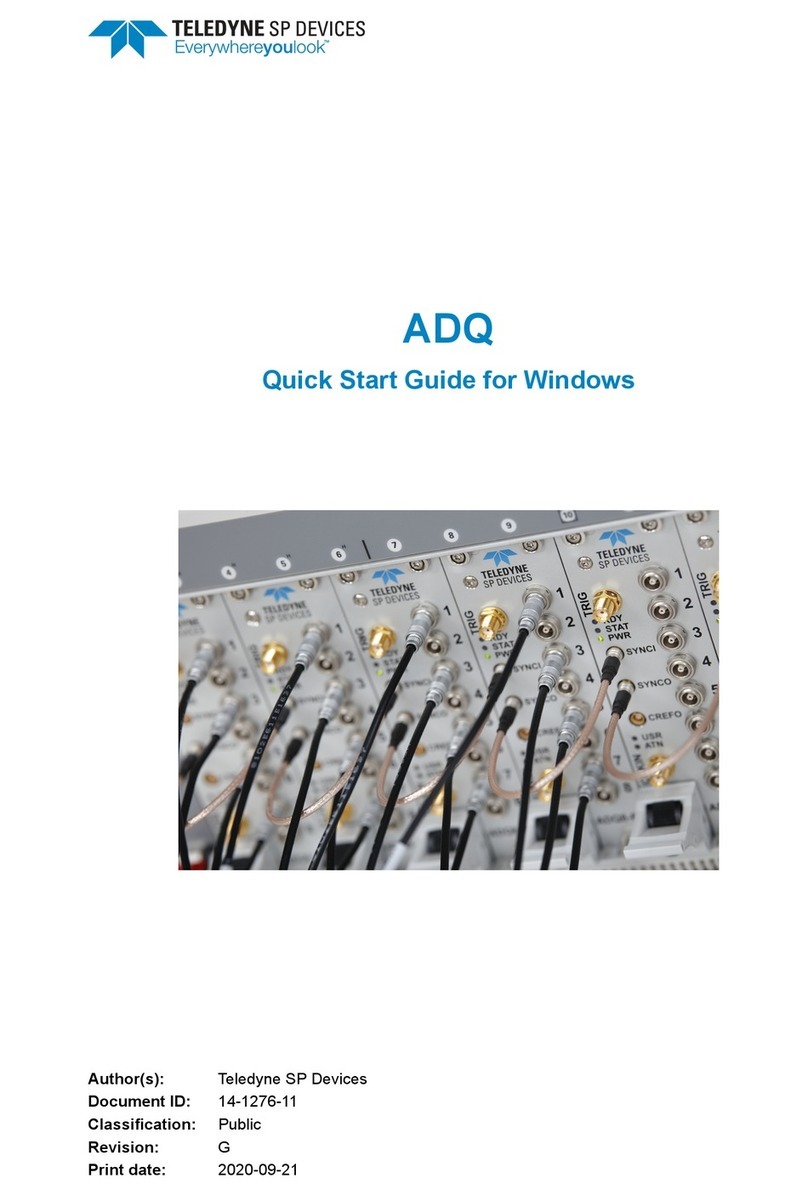
Teledyne SP Devices
Teledyne SP Devices ADQ quick start guide
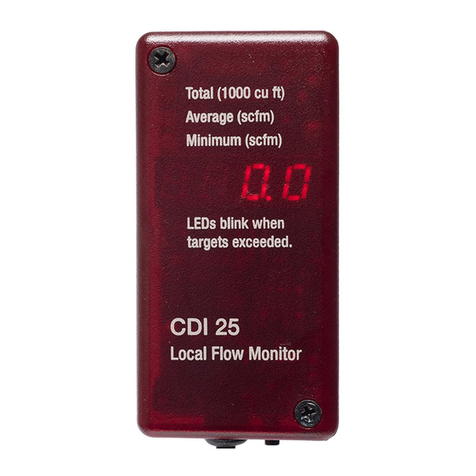
CDI Meters
CDI Meters CDI 25 Series Installation and operating instructions
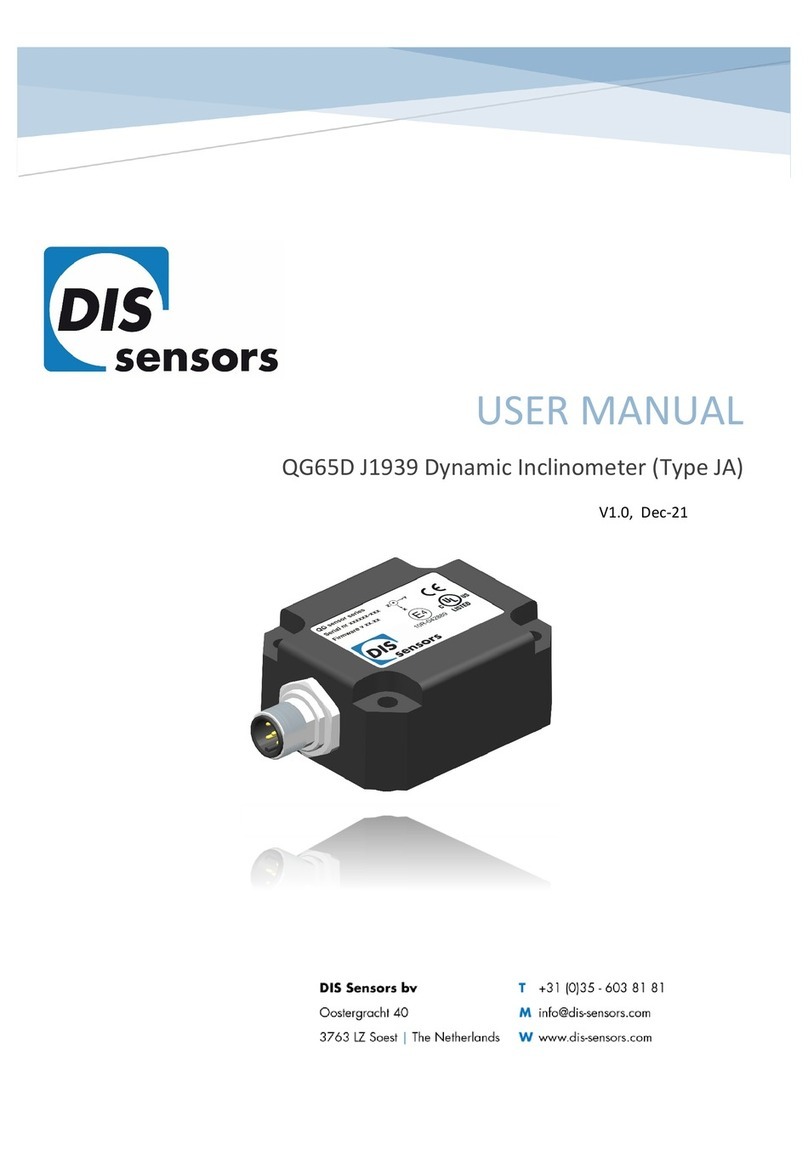
DIS Sensors
DIS Sensors QG65D user manual
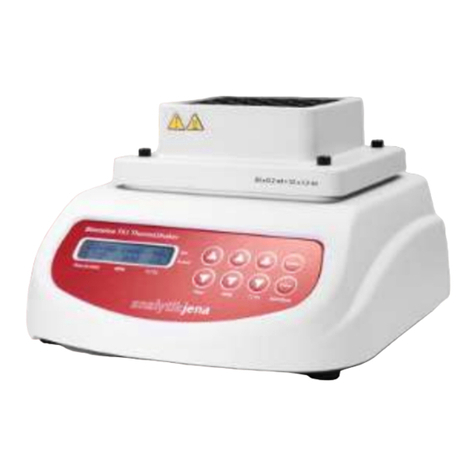
Endress+Hauser
Endress+Hauser Analytik Jena Biometra TS1 ThermoShaker Short manual
